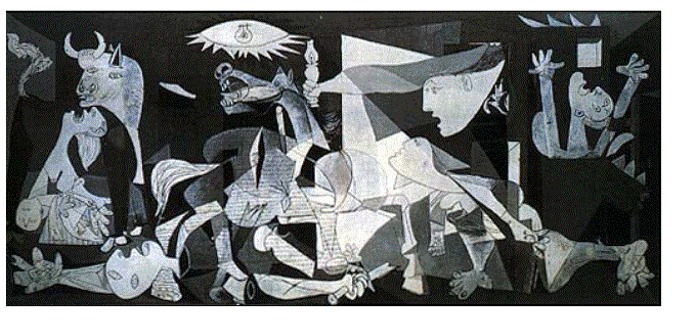GUERNICA, la verità oltre il mito
di Gianfredo Ruggiero Guernica, il celebre dipinto di Pablo Picasso, è un quadro riciclato. Fu infatti realizzato dall’artista molti anni prima del bombardamento tedesco della cittadina basca durante la guerra civile spagnola (1936-39). Come tutti gli spagnoli, Picasso amava le corride e, rimasto colpito dalla morte del famoso torero Joselito, suo beniamino, decise di dedicargli un dipinto.

